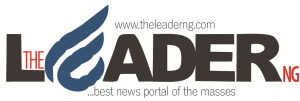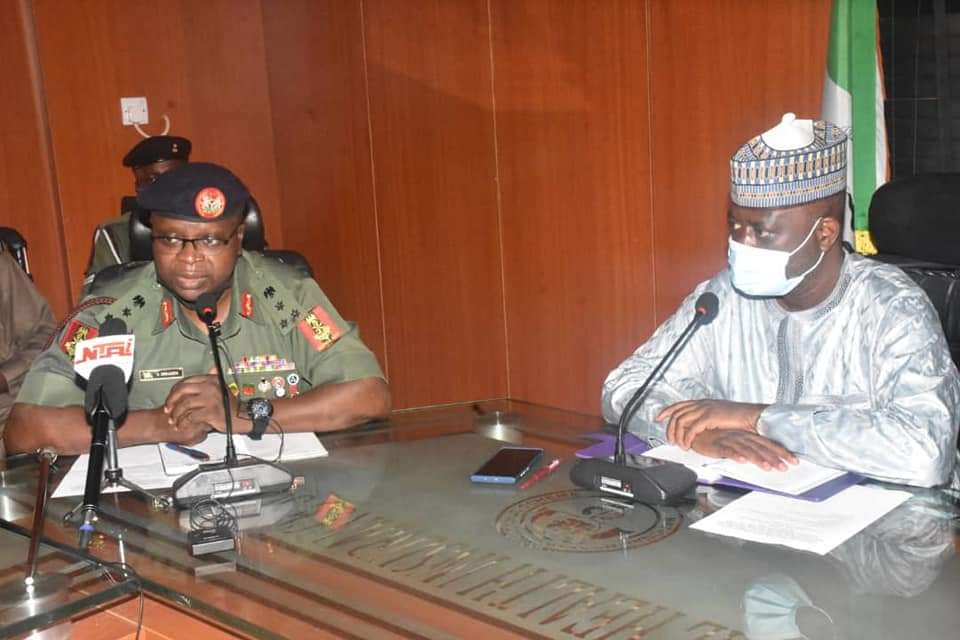Beyond being mandatory for the advancement of career prospects after graduation from university, completing the national youth service is a thing of pride for many Nigerian graduates. The process is so important that some Nigerians who complete their undergraduate studies in other countries return home to participate in it. Failing to complete the national service, executed by the National Youth Service Corps (NYSC), often means that young people are unable to secure certain jobs, or further their education or careers in the country. However, like many sectors of the economy, COVID-19 threatened this exercise.
The National Youth Service starts with a three-week orientation in camps located across all 36 Nigerian States and the FCT. Following this, corps members are deployed to both public- and private- sector organisations to work for another 11 months. When COVID-19 broke out, the exercise could not take place due to restrictions on movement and fear of the health risks to corps members. Christian Chiedozie experienced first-hand the impact of the camp closure, as his deployment was delayed for three months following his graduation from university.
Safety first
As the COVID-19 outbreak continued to spread across the country in 2020, orientation camps were forced to close as a proactive measure to ensure “safety first” said Brigadier General Shuaibu Ibrahim, Director General of the NYSC, in a TV interview. The phased reopening of the economy, months later, provided an opportunity to start a conversation around resuming orientation camps, said Dr Oyeladun Okunromade, Deputy Director, Nigeria Center for Disease Control (NCDC). The NYSC leadership then approached the Presidential Task Force on COVID-19 (now the Presidential Steering Committee on COVID-19) to put strategies in place for the resumption of their activities. Dr Okunromade was asked to lead the process.
She said that first on the agenda of the committee which comprised mostly of NYSC and NCDC staff was to “look at strategies that will ensure the safety of corps members when they are in camp to ensure that we keep building trust of the entire country, especially their guardians.”
The team carried out a readiness and needs assessment, using a checklist, in all 37 camps in the country to ensure they were prepared to host corps members. As some of the camps were used as temporary isolation centres, it was important to ensure they were fit for the purpose of hosting orientation exercises. Once completed, they provided a checklist of things the camps must put in place before they could reopen.
Working with existing response infrastructure set up by the NCDC helped the process. The Disease Surveillance and Notification Officers (DSNOs) working with state epidemiologists and the Surveillance Outbreak Response Management and Analysis System (SORMAS) were leveraged to monitor and report activities of public health importance in the camps.
They also divided the graduates into streams to ensure no more than 800 were mobilised to be in camps at once. This is in contrast to the usual 10,000 to 20,000 before the pandemic. To further control the crowd, they were also assigned specific days to report to camp.
Technology played a key role in managing the process. Before accessing and printing their call up letters, the intending corps members were required to read NYSC guidelines developed by the NCDC and then acknowledge their willingness to adhere to them and other infection, prevention and control (IPC) guidelines, including being tested for COVID-19, before being admitted to the camps. After which they visited the SORMAS page to provide their travel history, medical history and now, their COVID-19 vaccination status. A unique code was then generated which they printed and presented at the gate, along with their call up letters.
Before being accepted into the camp, they were screened for COVID-19 using a rapid diagnostic test (RDT). Upon receiving a negative test result, corps members were able to proceed with registration while the surveillance team conducted a Polymerase Chain Reaction (PCR) test to confirm positive cases.
Dr. Okunromade said this coincided with the World Health Organisation’s approval of emergency use of antigen based RDTs. So, they leveraged the opportunity to validate the test kits and subsequently developed the NCDC guideline for RDT use in congregate settings.
With Zoom meetings and virtual events already popular because of lockdowns, corps members joined webinars where they interacted with officials of NYSC and NCDC to have their questions addressed.
Did it work?
Onyinye Oranezi is a corps member working with a non-profit for her service year. Her orientation was in May 2021 and while at camp, she said she was confident that the strategies put in place were enough to protect her and others. For her, the experience was worthwhile, and she was glad COVID-19 didn’t lead to continued suspension of the exercise. Chiedozie also completed his orientation and is now working at his place of primary assignment.
As of March 2021, when the project team from NYSC and NCDC met to review their efforts, three streams of corps members totaling over 98,000 had passed through the orientation camps. All of them got screened for COVID-19. To make the process easier, NCDC trained 15 corps members in each state to support the laboratory team.
The ability to collaborate with the right people is one reason why these efforts have achieved the desired results. According to Dr. Okunromade, “You can have fantastic ideas and plans, but if you don’t have the cooperation of the people that are supposed to drive it, there is little you can achieve.” For example, corps members were barely signing up for the pre-camp webinars. Working with the NYSC team, they came up with a strategy of tying participation to accessing call up letters. Registration jumped from 1000 to over 40,000 at the last webinar with over 3000 attending via Zoom, maxing out their meeting room capacity. The rest, over 9000, joined via Youtube.
Learning, adapting, and sustaining gains
The SORMAS structure is now maintained as a public health strategy to capture potential disease outbreaks in camps. Corps members are trained to support data capture and transmission to the server which is accessed at the NCDC headquarters. There are also IPC vanguards who have the mandate to ensure compliance to non-pharmaceutical prevention guidelines among fellow corps members in camp.
The community development service initiative, where corps members belong to groups with different focus areas now has risk communication and IPC clubs. This way, the NYSC can contribute to the national public health and infectious disease response structure of the country, said Okunromade. Before taking risk communication messages to their host communities across the country, they started in camp after their inauguration to disseminate COVID-19 related information using the public address systems.
These efforts don’t come without their fair share of challenges. The corps members trained to support the laboratory are not used in subsequent batches. This results in multiple training and resource waste. The waste generated from some of the testing exercises is not properly disposed of in some of the camps and this can lead to infections, annulling some of the gains made with IPC strategies.
“But these challenges also present opportunities,” said Brigadier Ibrahim. There’s no entity that doesn’t have challenges. What’s important is turning these challenges to opportunities.
So, beyond the official mandate of the service scheme, which is fostering unity and national integration, these lessons have revealed that the NYSC scheme can contribute to the country’s public health architecture by leveraging on the distribution of corps members of different disciplines and abilities across the country. It’s important not to waste this opportunity. Rather, further investment must be made to improve on and expand it, because quick detection and reporting of events of public health concern can make a world of difference in a country’s response to and managing of disease outbreaks.
Nigeria Health Watch


